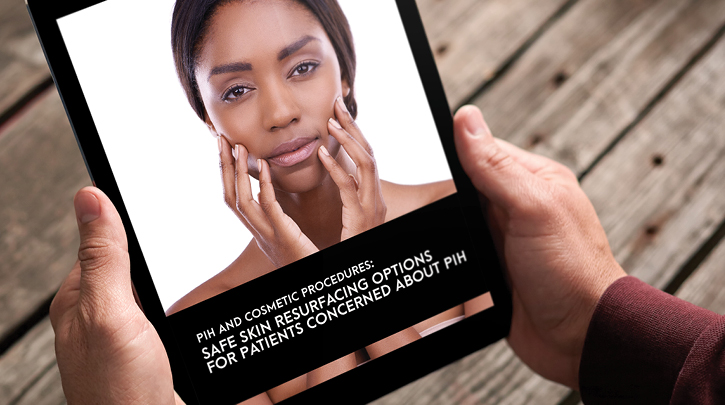Skin resurfacing treatments are the best tools at our disposal for treating common tone and texture issues like rosacea, acne and other scars, stretch marks, bumps, and uneven pigmentation. However, not all treatments are created equally, and results can vary widely.
One of the top concerns for skin resurfacing patients is post-inflammatory hyperpigmentation—also known as PIH. What is PIH, anyway? What does it mean for your practice, and how can you prevent it?
Understanding PIH
Post-inflammatory hyperpigmentation occurs when the skin overproduces melanin, or disperses pigment irregularly, in response to inflammation or injury. PIH is the skin’s natural reaction or defense to inflammation, which may be the product of acne, an infection, an irritant, a burn, or a cosmetic procedure. It results in flat, discolored spots on the skin that create an uneven skin tone.
Laser and Light-Based Skin Resurfacing Treatments
For many years, the CO2 laser was the gold standard in skin resurfacing technology. However, the treatment has its pitfalls. PIH occurs in nearly 40% of patients with darker skin tones when they are treated with a non-fractional CO2 laser device. When fractionated lasers hit the scene around 2007, they lowered the downtimes of treatments, but didn’t lower the risk of damage.
Later, medical aesthetic professionals adopted non-ablative fractional laser therapies, which reduced the risk of PIH, but still posed a threat for darker-skinned patients. Light-based therapy is an alternative to laser treatments; treatments using Intense Pulsed Light (IPL) reduce the chance of PIH, compared to laser, but the condition is still a potential side effect.
Radio Frequency Skin Resurfacing Treatments
The latest in skin-resurfacing technology involves fractional radiofrequency (RF). That method has risen in popularity because it offers a safer solution for patients with darker skin tones. Innovations on fractional RF systems, like the NanoFractional RF™ technology used by Venus Viva™, prove to be the safest choice for patients with a wider range of skin types.
NanoFractional RF™ which utilizes needle-shaped pin tips as the electrode to deliver the RF energy. Due to the small size of the pin tips and more homogeneous energy delivery, researchers have shown that the Venus Viva™ system can ensure high enough energy delivery to be effective without further risking PIH.
Learn More About PIH
Want to learn more about safer skin resurfacing systems? Venus Concept is excited to offer a free report to help aesthetic professionals understand and address PIH. Download our report, PIH and Cosmetic Procedures: Safe Skin Resurfacing Options for Patients Concerned about PIH, to learn more about causes of post-inflammatory hyperpigmentation and the best technologies for treatment.
Practice Enhancement Tips






